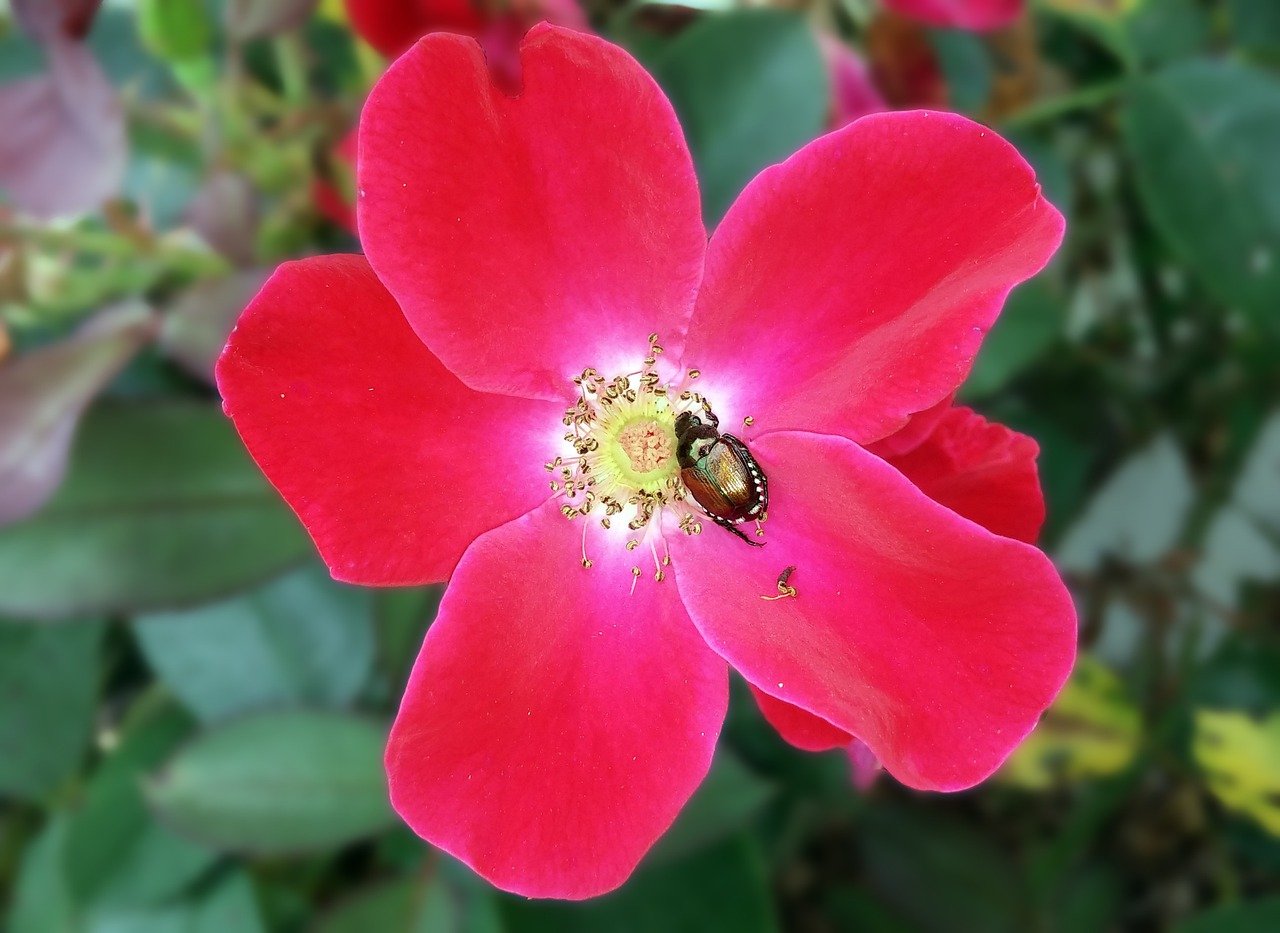You can learn how to root knockout roses from cuttings in only two easy steps. And if you have some knowledge in rose propagation itself, you’ll have a quicker time adapting the techniques for success. More so, the advantage of knockout roses is that they are specifically bred to be disease-resistant, putting them on a more comfortable playing field once more.
According to the University of Maryland, these roses are even immune to typical rose fungal diseases and are generally effortless to grow. However, propagation will always be more comfortable to start in a controlled environment like the greenhouse. This structure can create healthy parent plants for cuttings and also as a starting location before transplanting permanently.

How To Root Knockout Roses From Cuttings Successfully
Step #1. Gathering cuttings
The best time to take cuttings from knockout roses is from November to February, but what makes them unique is that you can still collect any time of the year if necessary. The process itself is by removing the top eight inches of a branch from a knockout rose bush at a 45-degree angle. And similar to how you’d prepare cuttings of other plants, you want to remove all the flowers and leaves, except the two at the top.
Some gardeners even remove the bark at the first three inches of the bottom of the cutting. This will help establish them because the cutting will absorb the medium’s nutrients and create new roots more comfortably. Speaking of which, don’t forget to the dip the end of the cutting in a rooting hormone powder to make the root establishment much faster.
Step #2. Planting
What is the ideal medium for knockout rose cuttings? You can use a mixture of fertile potting soil and sand or compost and sand for better drainage. Moisten this mix and lose it up before inserting the cutting at around four inches deep.
To create an ideal rooting environment, cover the pot with a plastic bag while making sure that it doesn’t directly touch the cutting itself. You can place this pot in the greenhouse where it will receive indirect sunlight. And lastly, regularly monitor the medium and mist with water if necessary.
Once the cutting has rooted, you can transplant it outdoors in a permanent location that receives five to six hours of sun. Some gardeners wait for a month after rooting, but you can also leave them be for a year before transplanting. Once ready, transplant in winter when they are dormant by carefully digging up its root ball with soil intact.
Place the young plant in the new hole and firm the soil around it. A space of eight inches among the knockout roses is optimal. Afterward, water regularly with mulching for moisture retention and feed the young knockout roses once a month for optimal growth.
Planting Knockout Roses
Location
In general, knockout roses will thrive well in zones 5 to 9. It’s ideal to have them in a location with a maximum of eight hours of sun daily for flowering. As for the soil itself, fertile, well-draining soil with a pH between 6.0 and 6.5 would be optimal, and you can always incorporate compost and mulch to improve the ground. Lastly, keep in mind that these plants can get 5 feet tall, so plan the space to maintain good air movement.
Watering and fertilizing
The greenhouse will be comfortable for watering because you can use drip irrigation for watering. This will help retain soil moisture without overwatering. More so, mulch the soil to further help with the soil moisture while also keeping weeds at bay.
To fertilize knockout roses, you can feed them nitrogen fertilizer in spring and fall to make up for the potential nutrient deficiency. As they grow, you can feed once in spring only because over-fertilizing can reduce flower growth. Lastly, don’t forget to water before fertilizing to avoid burned roots.
Pruning
While knockout roses are self-grooming, pruning them is still beneficial to keep a neat garden. Use gloves and long sleeves and prune early every spring with bypass pruners. You don’t want to crush the stems, but instead, cut the dead canes close to the plant’s base.
You can prune up to 50% and cut at a 45-degree angle facing out for better shape and preventing standing water in the canes. You can also prune back in summer to help the plants produce flowers for fall. Overall, pruning is advantageous for aesthetics and the health and growth of knockout roses.
Conclusion
With knockout roses, gone are the days when you have to get anxious about rose diseases and tricky maintenance practices. Knowing how to root knockout roses from cuttings will help you propagate this gardener-friendly rose and further enhance the garden’s colors and overall look. There aren’t even any unique methods to do so, and you might even have an easier time rooting if you start indoors.
The process is as simple as taking an 8-inch cutting, stripping it of bark for easier nutrient absorption at the bottom, and dipping in a rooting hormone powder. Then, place it in a pot of potting soil and sand, cover with a plastic bag, and maintain moisture. And voila, you can transplant the young knockout roses a month or a year after establishing roots.
